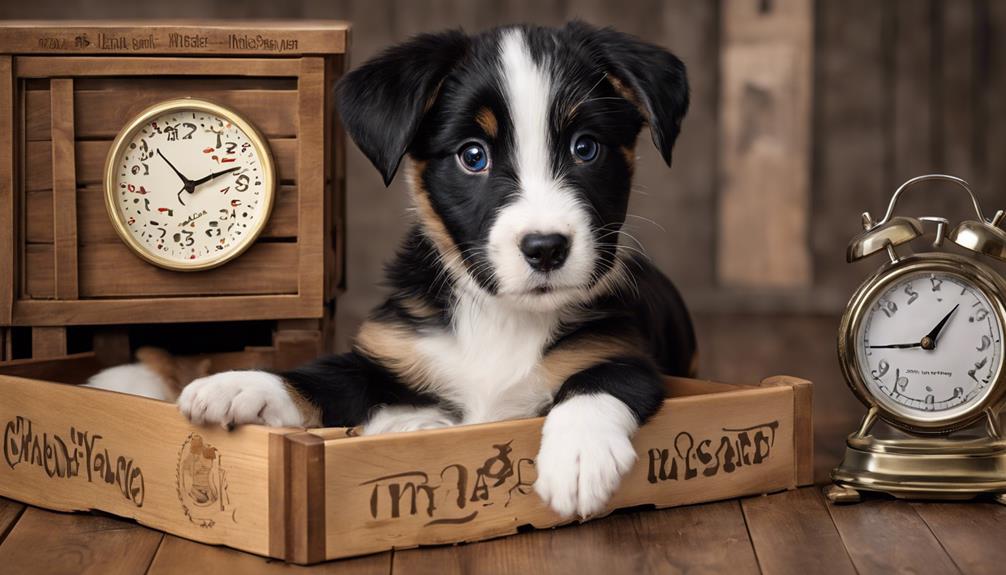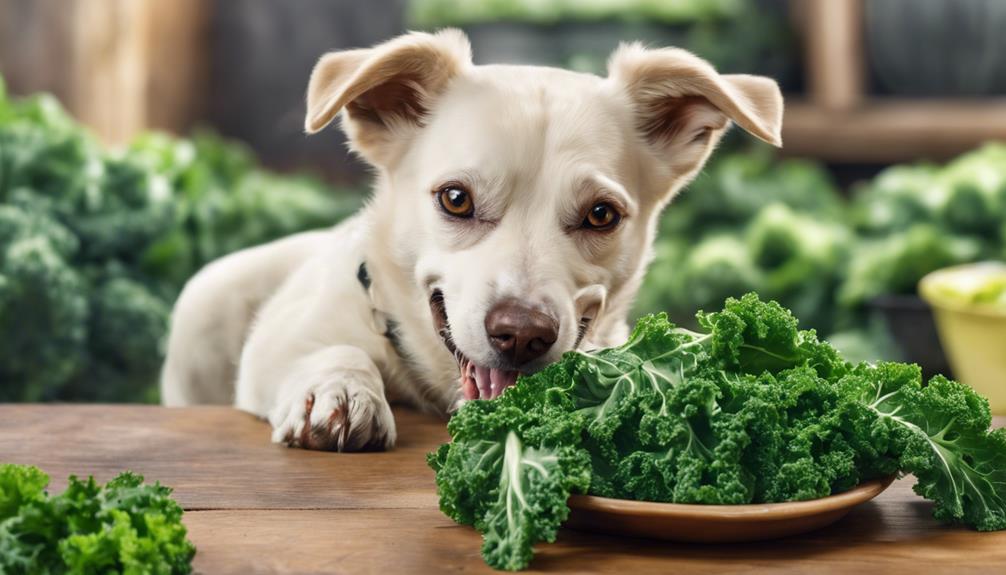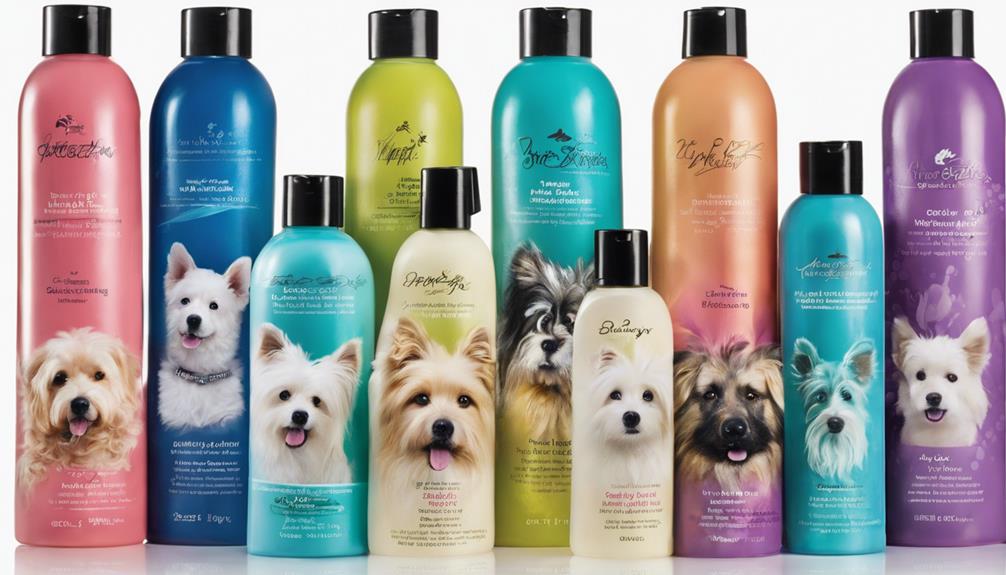Mastering the toilet training schedule with crate training ensures we establish a consistent routine for our puppy’s bathroom habits. Crate training capitalizes on our dog’s natural instincts, making it easier to follow the schedule with regular potty breaks and positive reinforcement. By setting clear expectations and gradually increasing crate time, we create a conducive environment for learning.
Understanding the basics is essential, but there's much more to discover about tailoring techniques, maintaining consistency, and addressing challenges effectively.
Key Takeaways
- Establish a consistent potty schedule.
- Take puppy out after meals and upon waking.
- Monitor signs of needing to go.
- Set a bedtime routine for bathroom breaks.
- Adjust schedule based on puppy's needs and celebrate successes.
Understanding Crate Training Basics
In our experience, crate training is a valuable tool that capitalizes on a dog's natural instincts as den animals. By following a consistent crate training schedule, utilizing positive reinforcement, and employing effective training methods, we can help our furry companions adapt to this routine. It's essential to establish a structured potty break routine within the crate training schedule to guide our dogs in understanding proper bathroom behavior.
Consistency is key when it comes to crate training. Setting clear expectations and sticking to a routine will aid in the learning process. Positive reinforcement, such as treats or verbal praise, can also encourage desired behaviors. When implementing training methods, remember to be patient and understanding.
Gradually increasing the time spent in the crate and providing opportunities for potty breaks at regular intervals will help in creating a successful crate training experience for both you and your dog.
Importance of Potty Training Schedule

Establishing a structured potty training schedule is essential for regulating your puppy's bathroom habits and reinforcing good potty behavior. Consistency is key when it comes to potty training schedules for your puppy. By having set times for potty breaks, you can reduce accidents in the house and help your puppy understand when and where they should go potty. Scheduled feeding times also play a significant role in creating predictable potty times for your furry friend. Monitoring and recording your puppy's elimination times can aid in establishing an effective potty training routine tailored to their needs. A well-structured schedule guarantees that your puppy receives enough opportunities to go potty and learn good habits. Remember, a consistent potty training schedule is especially important if your puppy is crate trained or attending a Training Class.
| Importance of Potty Training Schedule | |
|---|---|
| Regulates bathroom habits | Reinforces good potty behavior |
| Reduces accidents in the house | Establishes predictable potty times |
| Tailored to puppy's needs | Ensures enough potty opportunities |
Implementing Positive Reinforcement Techniques
To effectively instill positive reinforcement techniques in your puppy's potty training routine, consistency and patience are key. Positive reinforcement involves rewarding your puppy with high-value treats or praise when they eliminate in the designated potty area. By consistently praising and rewarding your puppy for desired behaviors, you reinforce the association between pottying in the right spot and positive outcomes. It's important to use a consistent release phrase or cue when your puppy eliminates outside to help them understand the desired behavior.
High-value treats can be a powerful motivator during training sessions, encouraging your puppy to potty in the designated area. This positive reinforcement not only creates a pleasant potty training experience but also strengthens the bond between you and your puppy. Remember, maintaining a consistent schedule and incorporating positive reinforcement techniques into your crate training routine will help your puppy learn and succeed in their potty training journey.
Addressing Behavioral Challenges Effectively
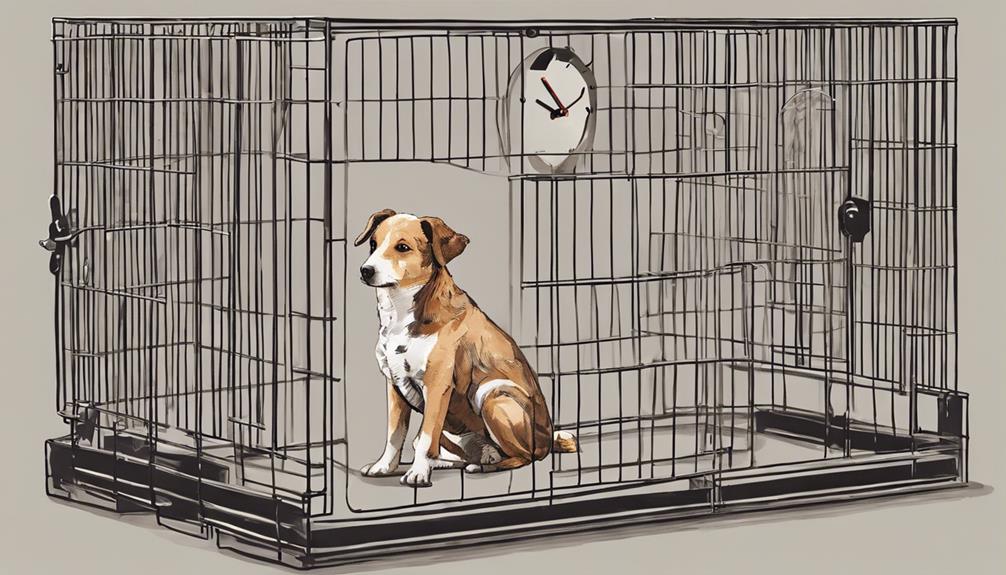
Addressing behavioral challenges during crate training can be tough, but with patience and consistency, we can help our furry friends overcome these hurdles.
Using positive reinforcement techniques and maintaining a structured routine are key in modifying unwanted behaviors.
Behavior Modification Techniques
How can we effectively modify challenging behaviors in our pets through positive reinforcement techniques and understanding their root causes?
When it comes to behavior modification, especially in the context of potty training, significant reinforcement plays a critical role. By using redirection and rewards, we can gently steer our pets away from unwanted behaviors and encourage positive ones. Consistency is key in reinforcing these changes for lasting results.
It's important to explore the root causes of behavioral issues to tailor our training methods effectively. If despite our efforts, behavioral challenges persist, seeking professional guidance can provide valuable insights and strategies. Remember, patience and a deep understanding of our pets' behavior are essential in successfully modifying their behaviors.
Positive Reinforcement Strategies
When guiding our pets through behavioral challenges, incorporating positive reinforcement strategies can pave the way for effective and lasting results in addressing their behaviors.
Positive reinforcement involves rewarding desired behaviors, such as going potty in the designated area, to reinforce good habits. Consistently praising and rewarding your puppy for using the crate as a potty spot is vital for effective training.
By using treats as positive reinforcement, you can create a strong association between desired behaviors and rewards. Implementing positive reinforcement strategies can help overcome hurdles in crate training and establish a successful potty schedule, leading to a well-trained puppy.
Tailoring Training Methods to Individual Dogs
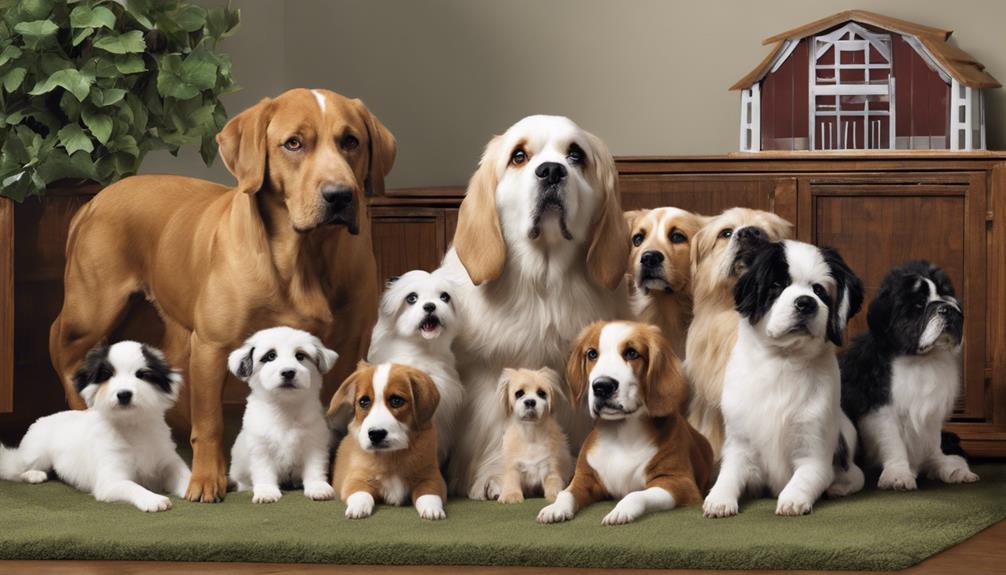
Understanding that every dog is unique, we can tailor our training methods to suit their individual needs. By taking into account factors like age, breed, and temperament, we can customize techniques to be most effective.
Adapting the training pace, intensity, and rewards guarantees a tailored approach that resonates with each dog.
Dogs Unique Personality
To effectively tailor training methods to individual dogs, it's important to recognize and accommodate their unique personality traits and learning preferences. Understanding your dog's distinct characteristics can have a substantial impact on the success of training efforts.
Here are three key considerations when customizing training techniques based on your dog's unique personality:
- Behavioral Cues: Pay attention to how your dog responds to different stimuli and adjust training methods accordingly.
- Motivational Factors: Identify what drives your dog, be it treats, playtime, or verbal praise, to reinforce positive behaviors effectively.
- Comfort Zones: Respect your dog's comfort levels and create a safe space where they feel secure to enhance the learning experience.
Customizing Training Techniques
Customizing training techniques for individual dogs involves tailoring methods to suit their unique personalities and learning preferences. When training a puppy, crate training can be a valuable tool, but customizing approaches is vital. Understanding the puppy's needs and observing their responses to different training methods are essential in finding what works best for them.
Ensuring Consistency for Training Success
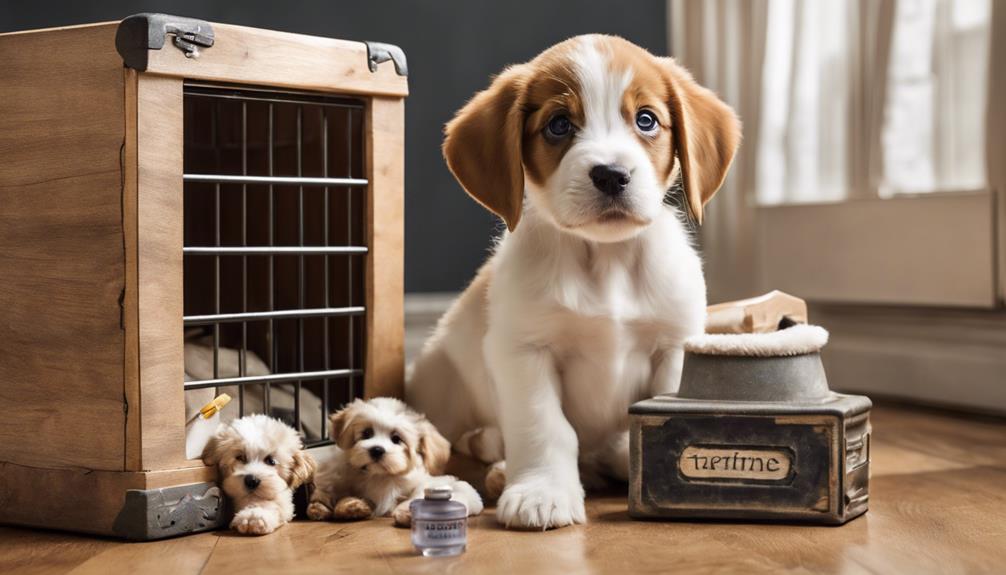
Consistency in your puppy's potty training schedule is vital for achieving training success and fostering good habits. To guarantee your training efforts yield the desired results, here are three key practices to maintain consistency:
- Stick to a Routine: Establish set times for potty breaks and feeding schedules. Consistency in these routines helps your puppy anticipate when it's time to go potty, reducing accidents and reinforcing good habits.
- Create Predictability: By following a consistent schedule, you create a predictable environment for your puppy. Knowing when to expect potty breaks helps your furry friend develop bladder control and understand where they should go to relieve themselves.
- Regulate Bathroom Habits: Consistent feeding and potty schedules aid in regulating your puppy's bathroom habits. This predictability not only makes training easier but also helps in housebreaking and overall training progress. By maintaining a steady routine, you set your puppy up for success in their potty training journey.
Frequently Asked Questions
How Long Do You Leave a Dog in a Crate for Potty Training?
We leave a dog in a crate for potty training for no more than 3-4 hours at a time. Regular breaks outside the crate help prevent accidents and reinforce good habits. Consistency in crate duration is key.
Does Crate Training a Dog Help With Potty Training?
Yes, crate training a dog helps with potty training. It taps into the dog's natural instincts, establishing a potty routine. Dogs learn to hold it in their den-like space. This method creates a consistent schedule, promoting success.
How Do You Crate Train and Potty Train at the Same Time?
We crate train and potty train simultaneously by establishing a routine. We supervise closely, anticipate needs, and reward success. Consistency is key – meals, playtime, crate time, and potty breaks all work together. Positive reinforcement leads to mastery.
What Is a Good Crate Training Schedule?
We take our puppy out every 2-4 hours during the day. Puppies can typically hold their bladder for their age in months plus one hour. Overnight, they may need a break once or twice. Consistency helps reinforce potty training habits.
How Does Crate Training Potty Schedule Differ from Regular Crate Training Schedule?
When it comes to crate training schedule tips, it’s important to distinguish between potty training and regular training. For potty training, the schedule should include frequent breaks for the puppy to go outside. Regular training focuses on teaching the puppy to enjoy spending time in the crate without needing a potty break.
Conclusion
To summarize, mastering crate training and a potty schedule is key to a well-behaved and house-trained pup. Remember, consistency is the key to success!
Just like a well-oiled machine, with a little patience and determination, you can have your furry friend on the right track in no time.
So, keep calm and crate on – your pup will thank you with wagging tails and wet noses!
